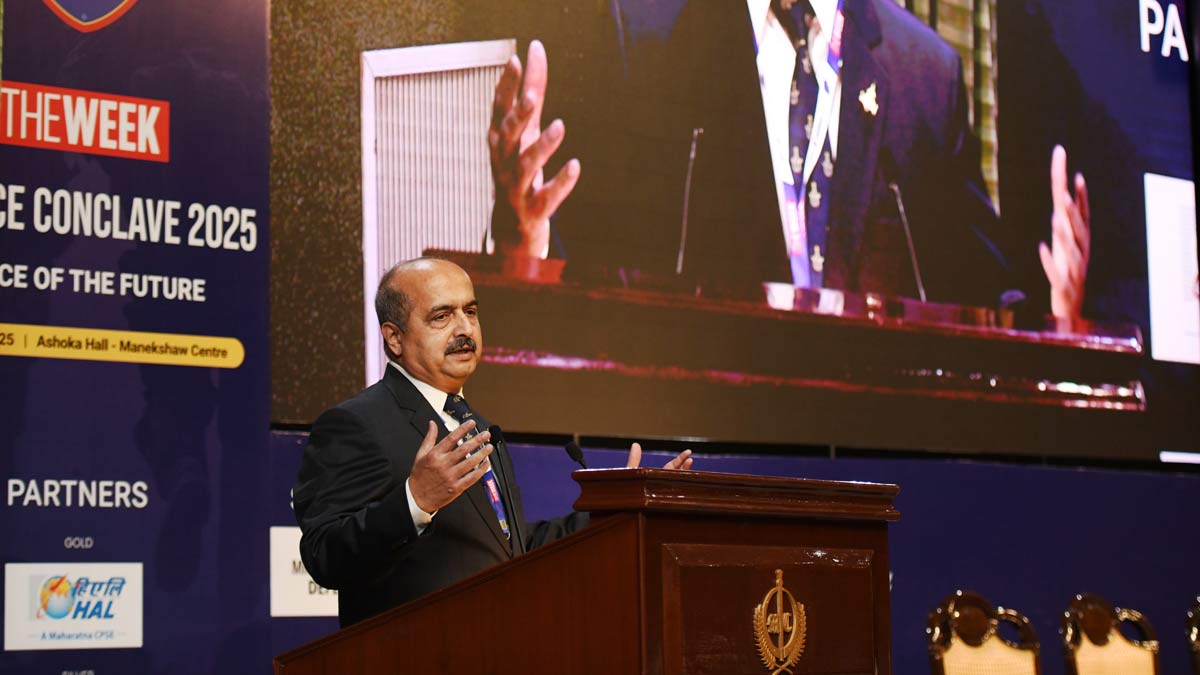‘Paradox of digital warfare space is that value of soldier in the loop is rising’: Former IAF chief V.R. Chaudhari
 Air Chief Marshal V.R. Chaudhari, former chief of the Indian Air Force, at THE WEEK Defence Conclave in New Delhi | Sanjay Ahlawat
Air Chief Marshal V.R. Chaudhari, former chief of the Indian Air Force, at THE WEEK Defence Conclave in New Delhi | Sanjay Ahlawat
Making everyone in the tri-services digitally fluent should be a core focus in the coming days, said Air Chief Marshal V.R. Chaudhari, former chief of the Indian Air Force, at THE WEEK Defence Conclave. The one-day conclave is being held at Manekshaw Centre, New Delhi, on April 17. Discussions at the conclave are set around the central theme—Force of the Future.
In his crisp speech, the air chief marshal focused on two disruptors that are being widely discussed—data and artificial intelligence. He added that war strategies evolved with every conflict. The Gulf War, he said, brought GPS, satellite communication and long-range cruise missiles to the fore. “At the end of every conflict, the list of must-haves goes up in every force,” he said.
He added that conflicts also drive changes in strategies and doctrines. “Before the Gulf War, we were trained in the C2 concept. The war replaced it with C4 ISR,” he said. Chaudhari was referring to the traditional concept of command and control (C2) being replaced by command, control, communications, computers, intelligence, surveillance, and reconnaissance (C4ISR).
The air chief marshal looked at three areas where data and artificial intelligence will converge—hardware, software and users. An example is the evolution of hardware systems to support predictive tools that look at adversaries and their capabilities.
He said that hardware connectivity is an advantage and a vulnerability, as adversaries are likely to target it. So, such systems will need to be defended adequately.
An area where software could come into play is to minimise collateral damage. Chaudhari cited the example of Israel, which has hypersonic platforms with great range and accuracy but could not minimise collateral damage.
Adequate software might be enough to tackle mass force in future, the air chief marshal said. An example would be the deployment of drones with swarm capabilities, and much would depend on how the autonomous swarm behaves and how each drone communicates with its neighbour.
Also, deploying a kinetic weapon against another might not make financial sense anymore, as seen in the ongoing conflict between Israel and Hamas, Chaudhari said. The example of deploying the Iron Dome to beat cheap rockets was cited. So, the future might see directed-energy systems like lasers and microwaves responding to kinetic weapons, he said.
“In the digital age, the paradox is that the value of the human in the loop is rising,” Chaudhari said. Hence, the need to make every soldier digitally fluent and equip the forces to make sense of large amounts of data.
THE WEEK Defence Conclave 2025 is supported by Hindustan Aeronautics Ltd, Airbus, Bharat Dynamics Ltd, Innefu, Larsen & Toubro and Mazagon Dock Shipbuilders Ltd.
Defence